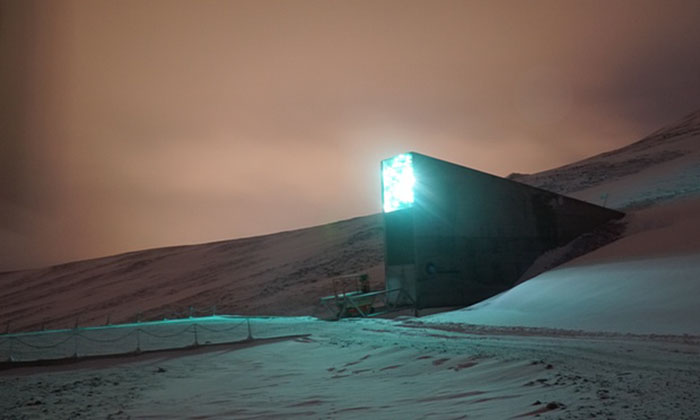The seeds – including varieties of wheat, barley, lentils, chickpeas and the wild versions of pulses and cereals – were copies of those originally held at an international research facility in Aleppo, Syria, that had been deposited in the vault for safekeeping.
The seeds were withdrawn from the Svalbard vault and shipped to Lebanon and Morocco, the trust which manages the facility said on Monday.
The Crop Trust said 38,073 seed samples had been removed from the vault – the first such withdrawal since the vault opened its doors in 2008 – and had been shipped in 128 boxes back to the region.
The samples in the first reverse shipment were “globally important” because of their link to the Fertile Crescent region, the Crop Trust said.
The seeds will be planted out at local research facilities and made available to farmers and breeders.
Arni Bragason, director of the NordGen government agency, which helps to manage the seed vault, said the operation was proof that the project of protecting the world’s food crop heritage in a remote location which has never practised agriculture was functioning as intended.
“It is wonderful to see the Vault is already proving its worth and that we have been able to help our friends in the Middle East to continue their vital work,” he said in a statement. “This is proof that the global system is working.”
Since 2008, the Svalbard seed vault and its guardians have been entrusted by the world’s governments with the safekeeping of the most prized varieties of crops on which human civilisation was raised. It contains the seeds of about 4,000 plant species – more than 720,000 individual plastic-sheathed samples.
The supposedly disaster-proof vault – which is based 130m up a mountain in case of sea-level rise, is earthquake resistant, and has a natural insulation of permafrost to further ensure its contents’ safety – was intended to keep the seeds frozen for decades, a hedge against loss of biodiversity due to industrial-scale farming and, increasingly, the dangers of climate change.
In truth, though, the managers of the Svalbard seed vault had never intended for the repository to be put to use so quickly. The collection at Svalbard was designed to be a back-up of other back-up collections, a seed sanctuary of last resort.
Meanwhile, the real work of safeguarding food crop diversity was entrusted to a network of seed banks around the world, which regularly planted out their specimens to ensure they remained viable and were able to adapt to a changing climate.
More about:
















































